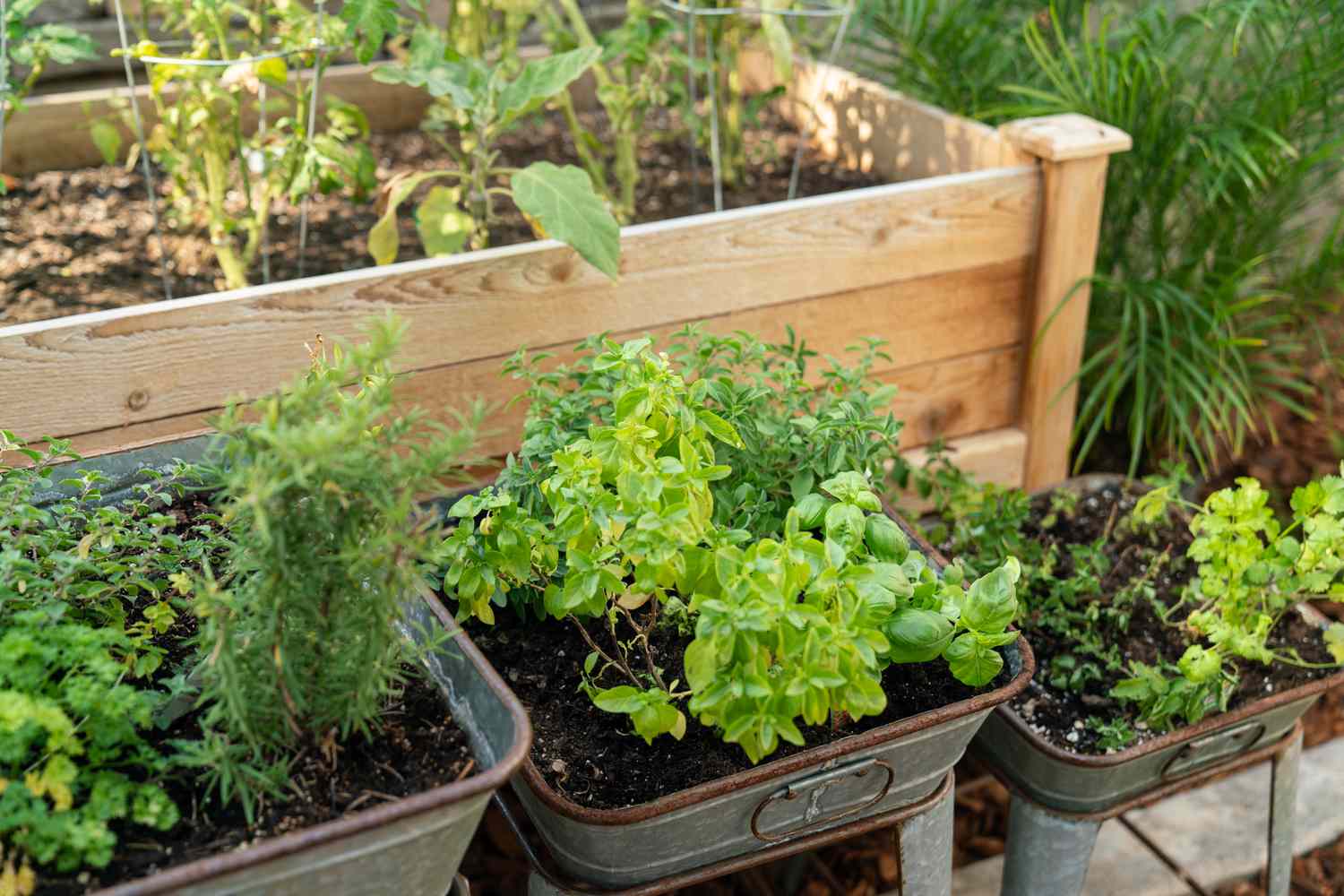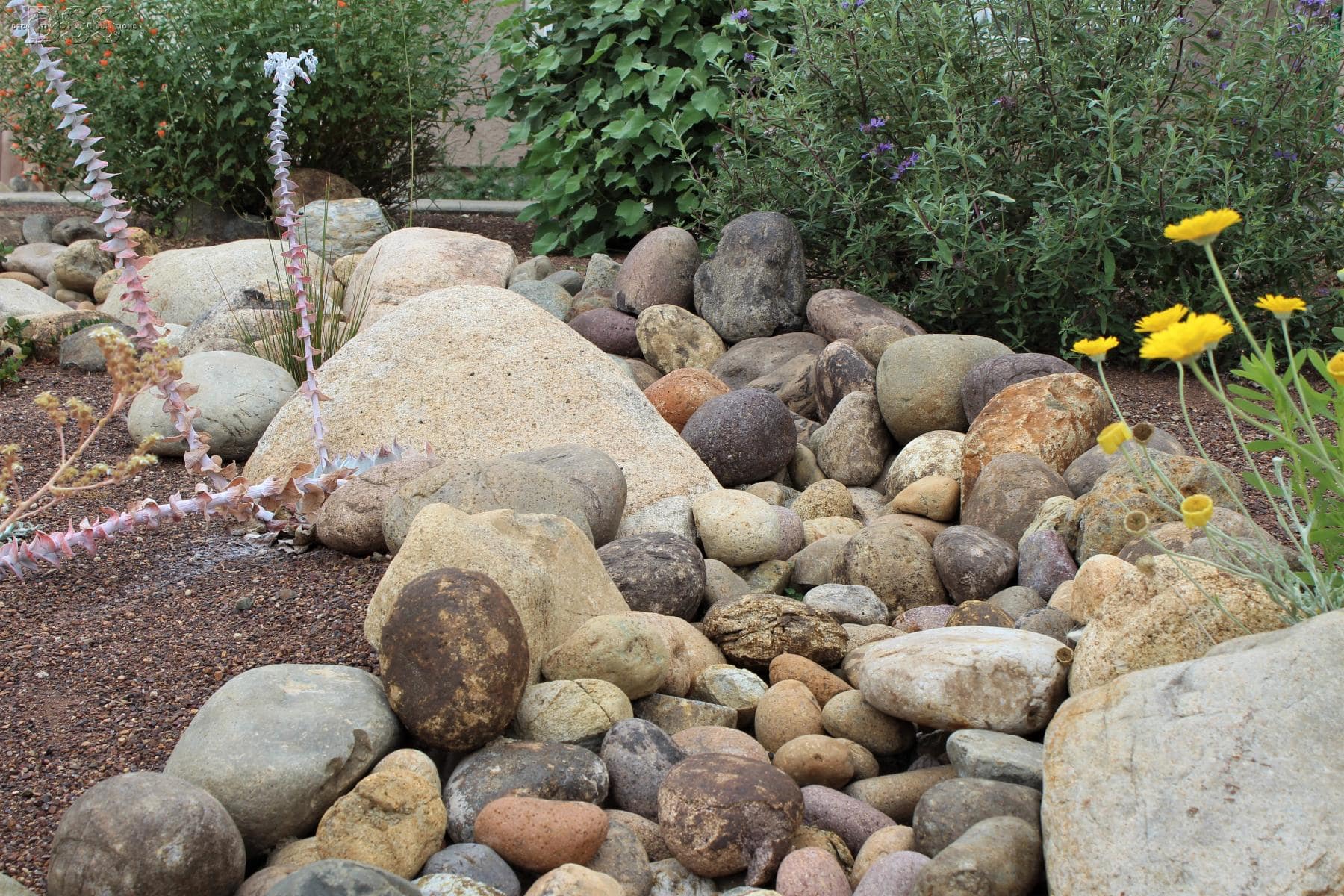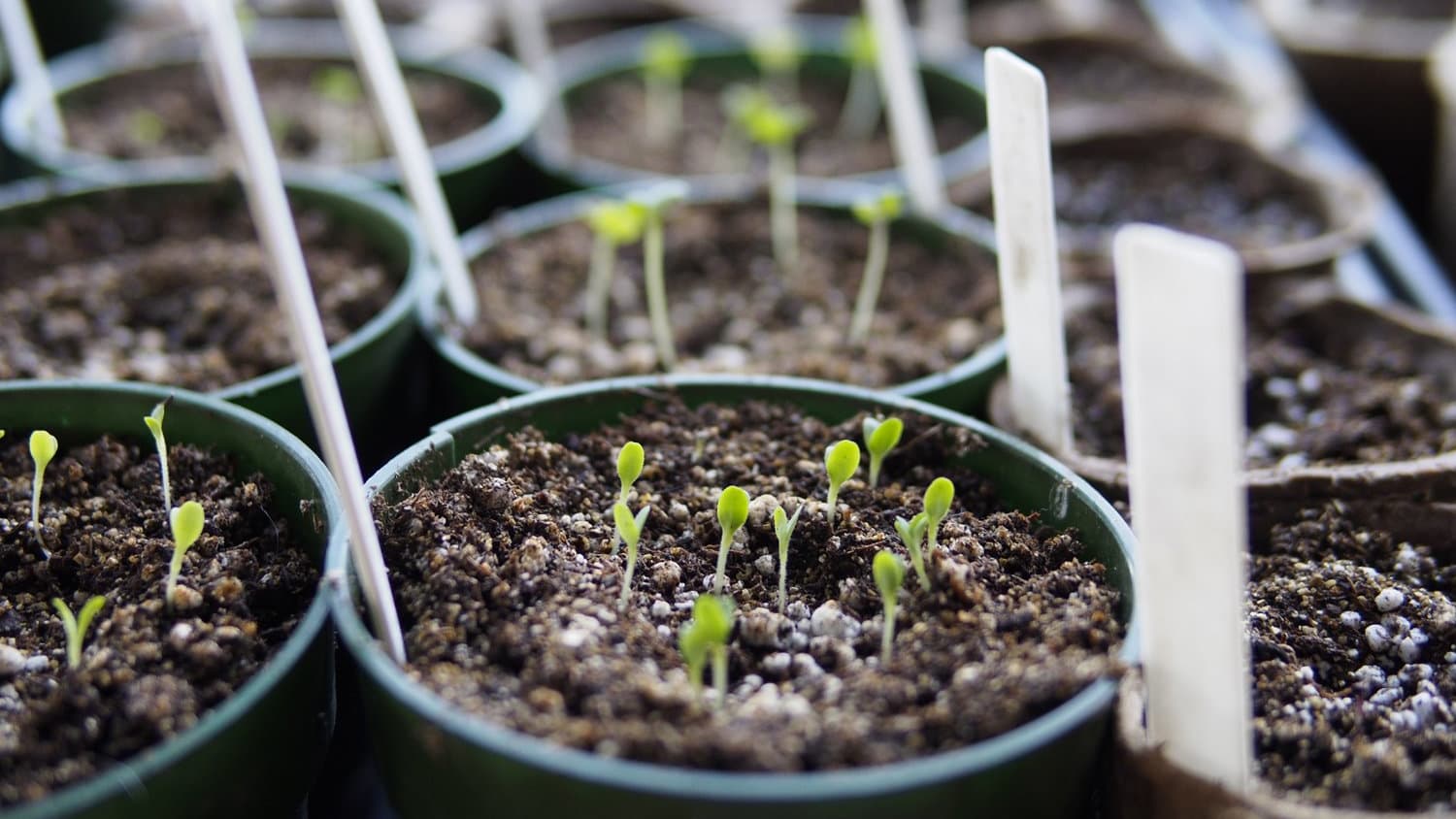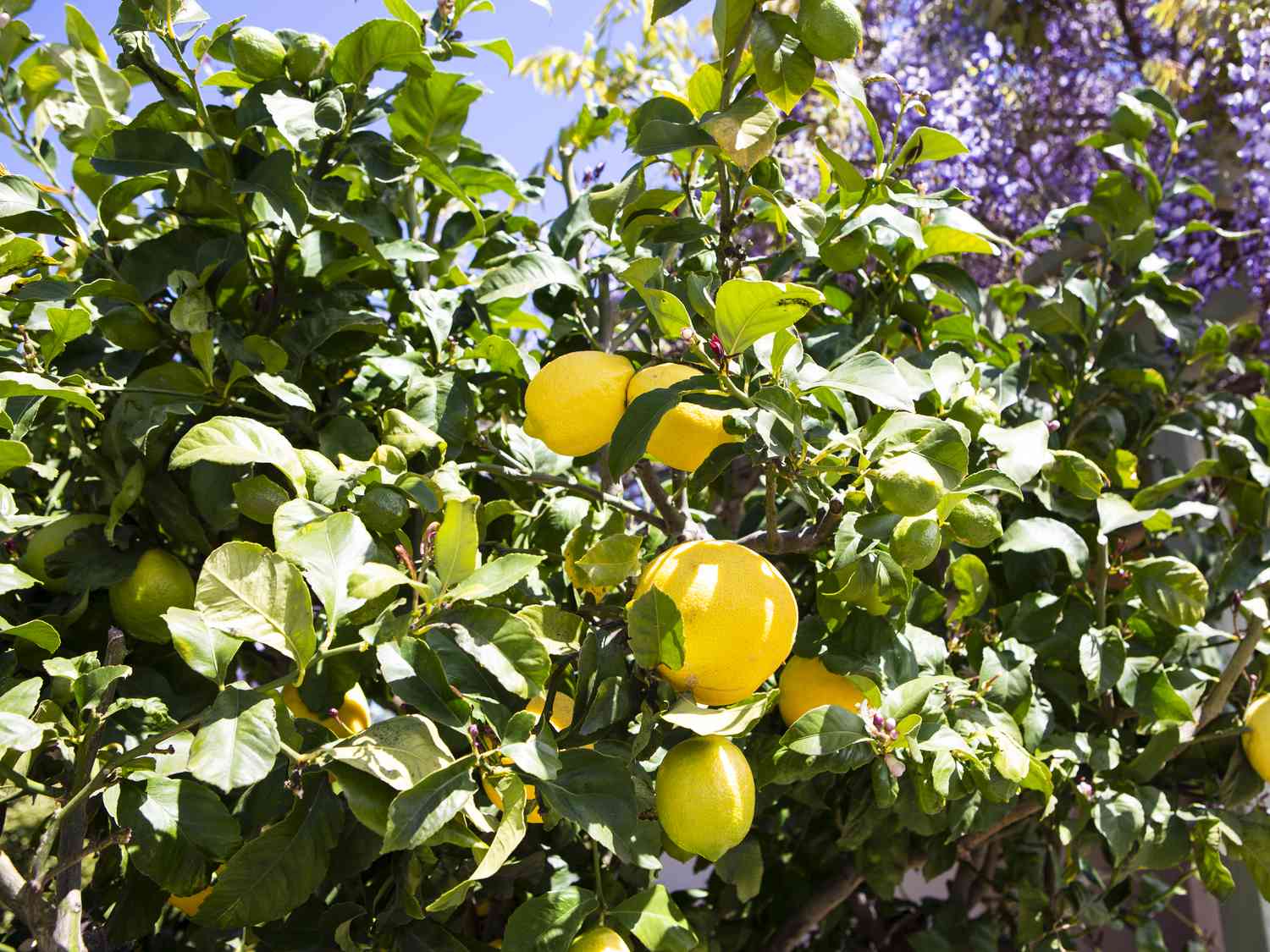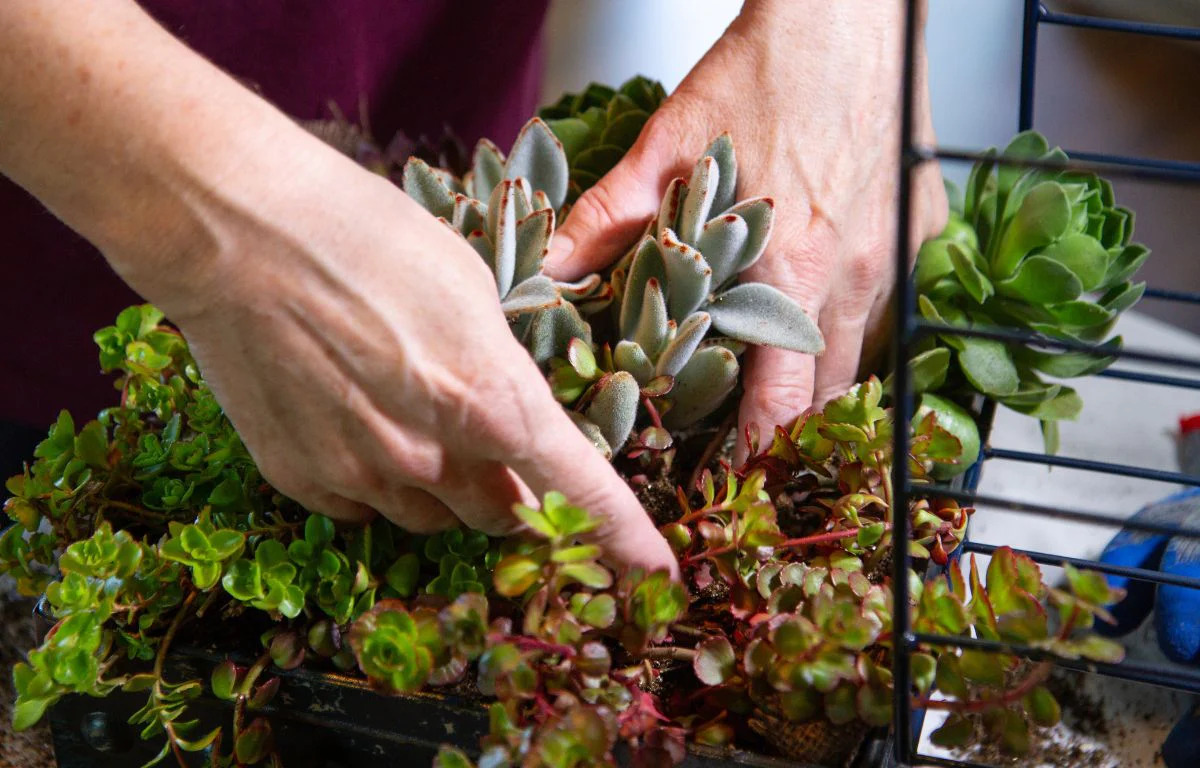Home>Types of Gardening>Ornamental Gardening>How Much Grow Light Do Succulents Need
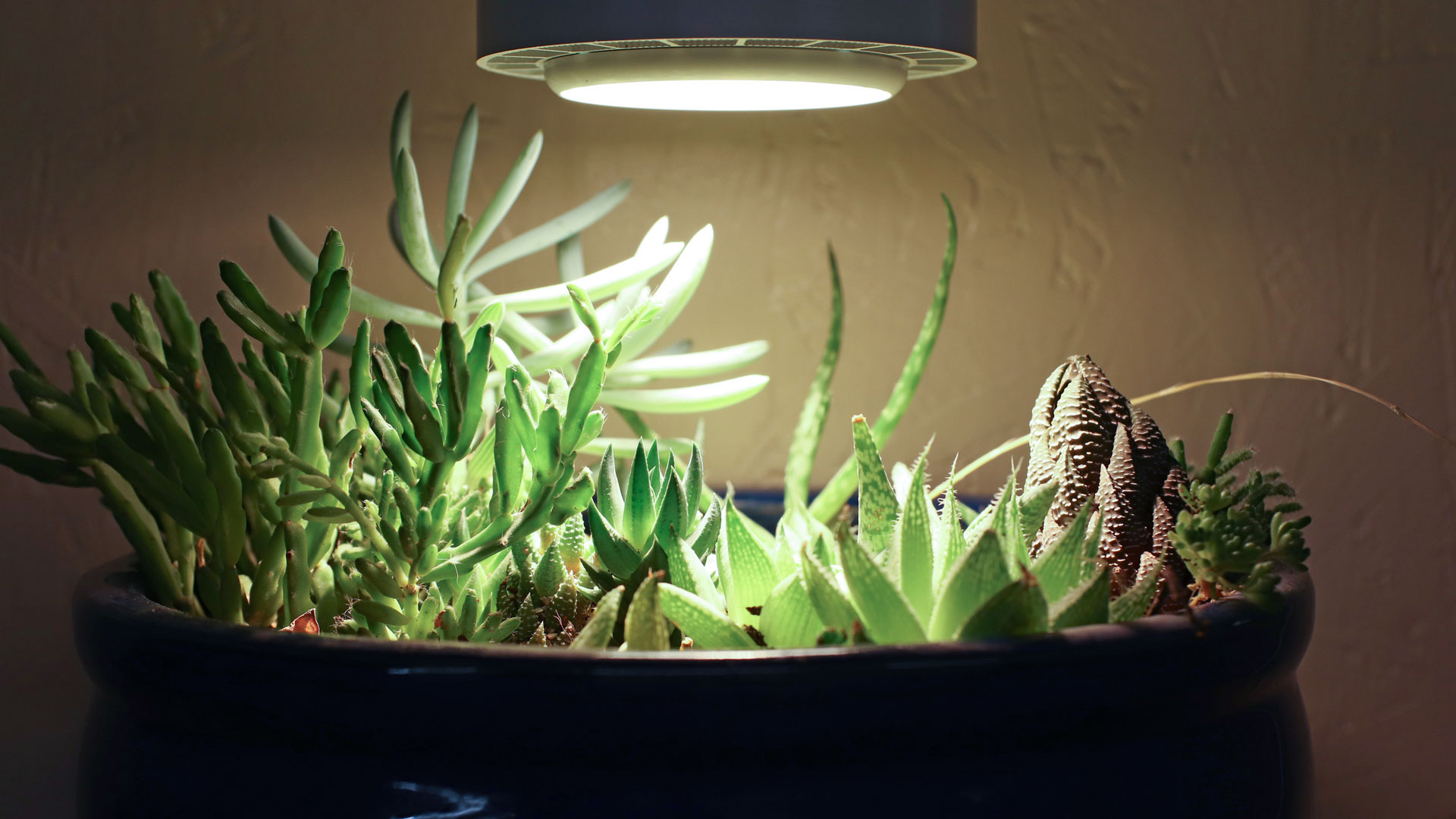

Ornamental Gardening
How Much Grow Light Do Succulents Need
Modified: January 22, 2024
Discover how much grow light succulents need for successful ornamental gardening. Maximize growth and thriving with the right amount of light exposure.
(Many of the links in this article redirect to a specific reviewed product. Your purchase of these products through affiliate links helps to generate commission for Chicagolandgardening.com, at no extra cost. Learn more)
Table of Contents
- Introduction
- Understanding Succulents
- The Importance of Grow Lights for Succulents
- Factors to Consider When Choosing Grow Lights for Succulents
- Determining the Amount of Grow Light Needed for Succulents
- Recommended Light Duration for Succulents
- Monitoring Light Levels for Optimal Succulent Growth
- Common Mistakes to Avoid When Using Grow Lights for Succulents
- Conclusion
Introduction
Welcome to the world of ornamental gardening! If you have a passion for beautiful foliage, vibrant blooms, and lush greenery, then you’ve come to the right place.
In this article, we will explore the captivating realm of ornamental gardening, specifically focusing on the importance of grow lights for succulents. Whether you’re a seasoned gardener or just starting out, understanding how to provide adequate light for your succulents is essential for their health and beauty.
Succulents, known for their fleshy leaves and ability to store water, have become increasingly popular among garden enthusiasts. These desert plants come in a wide variety of shapes, sizes, and colors, making them a versatile addition to any garden or indoor space.
Despite their adaptation to arid conditions, succulents still require proper lighting to thrive. In their natural habitat, succulents bask in the intense sunlight found in deserts. However, when grown indoors or in areas with limited natural light, supplementing with grow lights becomes necessary.
Grow lights simulate natural sunlight, providing the necessary light spectrum for photosynthesis and growth. By investing in the right grow lights and understanding their usage, you can create an optimal environment for your succulents.
In the following sections, we will delve into the factors to consider when choosing grow lights for succulents, how to determine the amount of light needed, recommended light duration, and common mistakes to avoid. So, let’s dig in and discover how to give your succulents the light they need to flourish!
Understanding Succulents
Succulents are a diverse group of plants that have adapted to survive in arid environments. They have unique features that allow them to store water in their leaves, stems, and roots, enabling them to withstand drought and thrive in challenging conditions. This water storage mechanism gives succulents their distinctive thick, fleshy leaves and stems.
One of the main reasons why succulents have gained popularity in ornamental gardening is their striking appearance. They come in a wide range of shapes, sizes, and colors, making them highly attractive for both indoor and outdoor arrangements. From the spiky leaves of the agave plant to the rosette formations of echeverias, succulents offer endless possibilities for creating visually captivating displays.
Another appealing characteristic of succulents is their low maintenance requirements. These plants have evolved to survive in harsh conditions with limited resources, which means they don’t need frequent watering. Overwatering can lead to root rot and damage the succulent’s health. Instead, succulents thrive in well-draining soil and prefer infrequent, deep watering.
Furthermore, succulents have a slow growth rate compared to other plants, which can be advantageous for those with limited gardening experience or limited space. They also have the ability to propagate easily through leaf or stem cuttings, making them a great choice for beginners looking to expand their collection without purchasing new plants.
When it comes to selecting succulents for your garden or indoor space, it’s important to consider their specific light requirements. While succulents have adapted to thrive in sunny, arid environments, not all species have the same light preferences. Some succulents prefer direct sunlight, while others can tolerate partial shade.
Understanding the light requirements of your succulents can help you choose the right location for them and ensure that they receive the optimal amount of light for their growth. For succulents grown indoors or in areas with limited natural light, supplementing with grow lights becomes necessary to provide the necessary light spectrum for photosynthesis.
In the next section, we will explore the importance of using grow lights for succulents and how they can help replicate the natural sunlight these plants need to thrive.
The Importance of Grow Lights for Succulents
Grow lights play a crucial role in the healthy growth and development of succulents, especially when they are grown indoors or in areas with limited access to natural sunlight. Succulents, being native to sunny and arid regions, require bright light to thrive and maintain their vibrant colors and unique shapes.
When succulents are deprived of sufficient light, they may begin to stretch or elongate in an attempt to reach for light. This stretching, known as etiolation, often results in thin and weak stems, causing the plants to lose their characteristic compact and sturdy appearance. In addition, succulents lacking adequate light can exhibit pale or faded colors, as they are unable to produce the pigments responsible for their vibrant hues.
By using grow lights, you can provide succulents with the necessary light spectrum for photosynthesis, allowing them to produce energy and grow properly. Grow lights emit light in specific wavelengths that closely replicate natural sunlight, ensuring that your succulents receive the right amount and quality of light they need for optimal growth.
Another advantage of using grow lights is that they allow you to control the intensity and duration of the light exposure. Different species of succulents have varying light requirements, and by using grow lights, you can customize the lighting conditions to meet the specific needs of your plants. This flexibility is especially helpful when growing succulents indoors, as you can create the ideal environment to mimic their natural habitat.
Grow lights also provide a consistent light source, unaffected by weather conditions or the changing seasons. This is particularly beneficial for those living in regions with limited sunlight or extreme climates, where natural light may not be sufficient for succulent growth. With grow lights, you can ensure that your succulents receive a consistent and reliable light source regardless of the external conditions.
It’s important to note that not all grow lights are created equal, and choosing the right type of grow light is crucial for the success of your succulents. In the next section, we will explore the factors to consider when selecting grow lights for your succulents to ensure their health and vitality.
Factors to Consider When Choosing Grow Lights for Succulents
When selecting grow lights for your succulents, there are several important factors to consider. These factors will ensure that you choose the right type of grow light to meet the specific needs of your succulents and promote their healthy growth. Let’s explore these factors in more detail:
- Light Spectrum: Succulents require a specific light spectrum for optimal growth. The ideal light spectrum for succulents includes a balance of blue and red light. Blue light stimulates compact and sturdy growth, while red light promotes flowering and fruiting. Look for grow lights that offer a full spectrum or a combination of blue and red LED bulbs to provide the best light quality for your succulents.
- Light Intensity: The intensity of the grow lights is another crucial factor to consider. Different succulent species have varying light intensity requirements. Some succulents, such as Echeverias and Haworthias, prefer bright, indirect light, while others, like Agave and Aloe, can tolerate more intense direct sunlight. Be sure to choose grow lights with adjustable intensity settings or position the lights at an appropriate distance from the plants to ensure the right level of light intensity.
- Light Duration: The duration of light exposure is important for succulent growth. While succulents require bright light, they also need a period of darkness for proper rest and metabolic processes. As a general guideline, provide your succulents with around 12-14 hours of light per day. You can use timers to automate the light schedule and ensure consistent light exposure.
- Energy Efficiency: Energy efficiency is a key consideration when choosing grow lights for your succulents. Opt for energy-efficient LED grow lights, as they consume less energy compared to other types of grow lights, such as fluorescent or incandescent bulbs. LED lights also have a longer lifespan, reducing the need for frequent replacement and saving you money in the long run.
- Light Coverage: Consider the size and coverage area of the grow lights. Ensure that the grow lights you choose provide adequate coverage for your succulents. If you have a large collection of succulents, you may need multiple grow lights or larger lighting fixtures to evenly distribute the light across all your plants.
- Budget: Finally, consider your budget when selecting grow lights. While there are various options available, it’s important to find a balance between quality and affordability. It’s worth investing in high-quality, durable grow lights that will provide consistent and reliable lighting for your succulents, ensuring their long-term health and vitality.
By considering these factors, you can select the most suitable grow lights for your succulent collection. The right grow lights will ensure that your succulents receive the optimal light spectrum, intensity, and duration, promoting healthy growth and vibrant foliage.
Determining the Amount of Grow Light Needed for Succulents
When it comes to providing the right amount of grow light for your succulents, it’s important to strike a balance. While succulents require bright light for optimal growth, excessive light exposure can lead to sunburn and damage the plants. Determining the correct amount of grow light needed for your succulents involves considering a few key factors:
- Succulent Species: Different succulent species have varying light requirements. Some species, like Echeverias and Sedums, prefer bright indirect light, while others, like Agave and Crassulas, can tolerate more direct sunlight. Research the specific light preferences of your succulent species to determine the appropriate light intensity.
- Size and Shape of the Plants: The size and shape of your succulents will also influence the amount of light they need. Compact and rosette-shaped succulents typically require less light compared to tall and sprawling varieties. Adjust the light intensity and placement accordingly to ensure all parts of the plant receive adequate light.
- Distance from the Light Source: The distance between your succulents and the grow lights is crucial. If the lights are too far away, your succulents may not receive enough light. On the other hand, if the lights are too close, they can cause heat stress and burn the plants. Generally, a distance of 6-12 inches between the lights and the plants is recommended, but always monitor your succulents for signs of light stress or burn.
- Light Intensity Settings: If your grow lights have adjustable intensity settings, start with a lower intensity and gradually increase it as needed. Observe your succulents closely for any signs of stress or damage. If you notice burnt or discolored leaves, it’s an indication that the light intensity is too high and needs to be adjusted.
- Light Duration: Succulents require a balance of light and darkness. While providing around 12-14 hours of light is generally recommended, it’s equally important to allow your succulents a period of rest in darkness. Too much light without a break can affect their growth and overall health.
- Monitor and Adjust: Keep a close eye on your succulents and monitor their response to the grow lights. Look for signs of healthy growth, such as compact leaves and vibrant colors. If you notice stretching, pale colors, or other signs of light deficiency, it’s an indication that your succulents may need more light.
Remember, it’s better to start with slightly less light and gradually increase it if needed. This gradual acclimation will help your succulents adjust to the new lighting conditions without causing stress or damage. Regular observation, proper placement, and adjustment of the grow lights will ensure that your succulents receive the ideal amount of light for their specific needs.
Recommended Light Duration for Succulents
The duration of light exposure is a crucial aspect of succulent care when using grow lights. While succulents require bright light for optimal growth, they also need a period of darkness to rest and carry out essential metabolic processes. Striking the right balance between light and darkness is key to ensuring the health and vitality of your succulents.
As a general guideline, it is recommended to provide succulents with around 12-14 hours of light per day. This duration allows for sufficient light absorption and photosynthesis, promoting healthy growth and vibrant foliage. However, it’s important to note that different succulent species may have slightly different light duration preferences, and certain factors may influence the recommended light duration:
- Succulent Species: Each succulent species has its own unique light requirements. Some succulents, such as Echeverias and Haworthias, prefer bright but indirect light and can benefit from shorter light durations. On the other hand, succulents like Agave and Aloe can tolerate longer periods of direct light exposure. Research the specific light preferences of your succulent species to determine the ideal light duration.
- Growth Stage: The growth stage of your succulents can also influence the recommended light duration. During the active growth phase, succulents require more light to fuel their growth and development. As they enter dormancy or undergo a slower growth period, they may benefit from reduced light durations. Adjust the light duration accordingly to mimic the natural seasonal changes that succulents would experience in their native habitats.
- Light Intensity: If you are providing high-intensity light to your succulents, you might consider reducing the duration of light exposure slightly. Intense light can be more efficient and provide adequate energy for photosynthesis in a shorter amount of time. However, be cautious not to decrease the light duration too much, as succulents still need enough time to absorb and process the light for their growth.
- Observation and Adjustment: Keep a close eye on your succulents and observe their response to the light duration. Healthy succulents will display compact growth, vibrant colors, and well-spaced leaves. If you notice stretching, pale colors, or weak growth, it could be a sign of insufficient light duration. Alternatively, if you see signs of light stress, such as burnt or discolored leaves, it may indicate too much light exposure. Adjust the light duration accordingly based on the observations of your succulents’ health and growth.
It’s essential to create a consistent lighting schedule for your succulents, mimicking a natural day-night cycle. To ensure consistent light exposure, you can use timers to automate the on/off cycle of your grow lights. This will help maintain a regular light schedule and ensure that your succulents receive the necessary light duration without disruption.
Remember, the recommended light duration serves as a guideline, and it’s important to monitor your succulents’ response and make adjustments as needed. By providing the right balance of light and darkness, you will support the overall health and growth of your succulents.
Monitoring Light Levels for Optimal Succulent Growth
Monitoring light levels is crucial to ensure the optimal growth and health of your succulents. By regularly assessing the light conditions, you can make necessary adjustments to provide the right amount and quality of light for your plants. Here are some key aspects to consider when monitoring light levels:
- Light Meter: Using a light meter is a precise and objective way to measure the light levels in your succulent growing area. Light meters, also known as lux meters, provide readings in lux units, indicating the intensity of light. By periodically measuring the light levels, you can ensure that your succulents are receiving the appropriate amount of light for their specific needs.
- Sunlight vs. Grow Lights: If you are growing succulents indoors, it’s important to understand that natural sunlight differs from artificial grow lights. Natural sunlight provides a broader spectrum of light that includes ultraviolet (UV) and infrared (IR) wavelengths. Grow lights, on the other hand, can be adjusted to emit specific light spectrums. Monitoring light levels will help you determine if your succulents are receiving adequate or deficient light from the grow lights.
- Placement and Distance: The placement and distance of your grow lights play a significant role in determining light levels for your succulents. Experiment with different distances between the lights and the plants to achieve the optimal light intensity. As a general guideline, succulents should be placed 6-12 inches away from the grow lights to prevent light burn or stress.
- Symptoms of Light Stress: Monitoring your succulents for signs of light stress is crucial to prevent damage to the plants. Common symptoms of light stress include pale or bleached leaves, leaf burn or scarring, and elongated or etiolated growth. If you notice any of these symptoms, it’s an indication that your succulents may be receiving too much light or inadequate light levels.
- Natural Light Exposures: If you grow succulents outdoors or have access to natural sunlight, keep track of the duration and intensity of their exposure. Observe if they receive direct sunlight, partial shade, or full shade throughout the day. Understanding the natural light conditions will help you adjust the light levels provided by grow lights accordingly, ensuring a smooth transition for your succulents.
- Regular Inspection: Regularly inspect your succulents for any visible signs of light-related issues. Assess the size, shape, and color of the leaves, as well as the overall growth and health of the plants. Healthy succulents will exhibit compact growth, vibrant colors, and sturdy leaves. If you notice any abnormalities or changes, adjust the light levels as needed.
By consistently monitoring light levels and making adjustments when necessary, you can create the optimal light environment for your succulents. Remember, every succulent species has different light requirements, so it’s important to adapt the light levels based on their specific needs. Consistent observation and proactive adjustments will help ensure the healthy growth and overall well-being of your succulents.
Common Mistakes to Avoid When Using Grow Lights for Succulents
While grow lights can be a valuable tool for providing artificial light to your succulents, there are some common mistakes that you should avoid to ensure the success of your indoor garden. By being aware of these mistakes, you can create a healthy growing environment and promote optimal growth for your succulents. Here are the most common mistakes to avoid:
- Insufficient Light: One of the biggest mistakes is providing insufficient light to your succulents. Succulents require bright light to thrive, so not giving them enough light will lead to stretched growth and pale or faded colors. Make sure to choose grow lights with appropriate intensity and adjust their placement to ensure that all parts of your succulents receive adequate light.
- Excessive Light: On the flip side, exposing your succulents to excessive light can also be detrimental. Too much light can cause sunburn, leaf scorching, and growth abnormalities. Avoid placing your succulents too close to the grow lights or using lights with very high intensity without acclimating the plants gradually.
- Inconsistent Light Schedule: Succulents thrive with a consistent day-night cycle. Inconsistent light schedules, such as irregular or fluctuating light durations, can disrupt their growth and even lead to stress or dormancy issues. Use timers to maintain a regular light schedule and provide your succulents with the necessary rest periods.
- Using the Wrong Type of Grow Lights: Not all grow lights are suitable for succulents. Using the wrong type of grow lights, such as those with an incorrect light spectrum, can negatively impact their growth. Make sure to choose grow lights specifically designed for plants, preferably with a balanced spectrum that mimics natural sunlight.
- Inadequate Air Circulation: Succulents thrive in well-ventilated environments. If your succulents are placed too close together or in an area with poor air circulation, they may develop fungal diseases or suffer from excess humidity. Ensure that your grow lights and succulents have enough space and airflow to prevent such issues.
- Overwatering: While not directly related to grow lights, overwatering is a common mistake that can be exacerbated by improper lighting conditions. Succulents are adapted to withstand drought and prefer infrequent, deep watering. Overwatering can lead to root rot and other moisture-related problems. Adjust your watering schedule based on the light levels and intensity your succulents receive.
- Not Monitoring for Light Stress: It’s crucial to closely monitor your succulents for signs of light stress. Pale or bleached leaves, scorched patches, or elongated growth are indicators that your succulents are not receiving the right amount or quality of light. Regularly inspect your plants and make necessary adjustments to prevent further damage.
By avoiding these common mistakes, you can provide the ideal growing conditions for your succulents and maximize their growth and beauty. Remember to consider the specific light requirements of your succulent species and make adjustments as needed to create a healthy and thriving indoor garden.
Conclusion
Using grow lights for your succulents is a fantastic way to ensure their optimal growth and health, especially when natural sunlight is limited. By understanding the needs of your succulents and providing the right amount and quality of light, you can create an environment that supports their unique requirements.
Throughout this article, we explored the importance of grow lights for succulents and the factors to consider when choosing the right ones. We discussed how to determine the amount of grow light needed, the recommended light duration, and the significance of monitoring light levels. Additionally, we highlighted common mistakes to avoid when using grow lights to promote the successful growth of your succulents.
Remember, each succulent species has its own specific preferences for light intensity, duration, and spectrum. It’s essential to research and understand the particular requirements of your succulents to ensure their overall well-being. Regular observation, proper placement, and adjustment of your grow lights will play a vital role in creating an optimal light environment.
Lastly, don’t forget about the other essential aspects of succulent care, such as well-draining soil, appropriate watering, and adequate air circulation. When combined with the right lighting conditions, these factors will contribute to the overall success of your succulent garden.
Now that you’re equipped with knowledge about using grow lights for succulents, it’s time to put it into practice and watch your succulents thrive. Enjoy the beauty and uniqueness of these resilient plants as you create an indoor oasis filled with vibrant colors and striking foliage.
